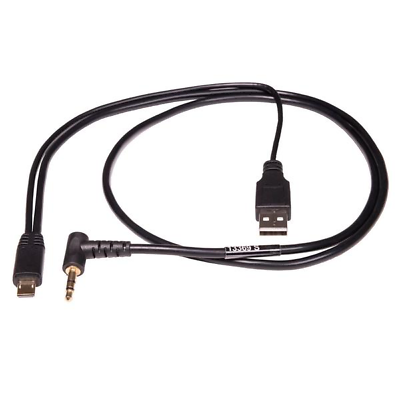So you have your remote camera set-up away from you, which has a trigger, and a cable plugged in. I was told that using that same set-up will help improve results.
This is what pocketwizard told me.... (I read this a while ago, can't remember it all, but there might be something of use in there!)
"Here's a little background on why you should use a cable on both the hand held and remote, other than the fact the electronic shutter usually disables the hot shoe:
Going from a handheld radio is easy, you just press the test button. The Plus IIIe radios have a special half press function and are our best products for remotely triggering cameras. When you half press the test button on the radio, it's just like half pressing the shutter button on your camera. This makes the camera ready to fire as soon as you press all the way down. the Plus IIIe is the only camera that can both send and receive half press signals but the Plus IVe can receive them from a transmitting Plus IIIe.
If you want to trigger from one camera to another, that can be a little tricky and there are a couple things to know. When a camera gets a signal to fire, it has to say to itself, "am I focused? check! is my exposure ok? check! ok, fire now!", even if everything is set manually. When a flash gets a signal to fire, it says to itself, "oh, fire? Ok, BOOM!"
When you press the test button in your hand, the radio sends out hundreds of packets of information. The physical act of pressing is quite a lot longer than a hot shoe trigger. When you have a radio in a camera's hot shoe, it thinks the radio is a flash. When you are triggering a radio from the camera's hot shoe, it thinks it's just triggering a flash, so it doesn't need very many packets to get the signal out.
That means that the radio on the camera can't always send trigger signals long enough for the camera to focus, confirm exposure, and fire. By the time the camera is ready, the radio is done sending information. That's why manual focus and exposure works best. And honestly, that's what we suggest for remote cameras, plus YOU choose what it focuses on.
There is a slight delay before the remote camera triggers and that is a simple explanation as well. You press the shutter button on the camera in your hand. When the shutter goes, it sends a signal to the receiving radio. That radio then tells the camera to focus and fire. Not quite at the same time, as you can see.
The best solutions is to use a remote camera cable on both cameras with Plus IIIe radios. Normally the transmitting radio doesn't send the trigger till the shutter moves, which is why there's a delay between cameras. With a cable connected to the transmitting Plus IIIe, the radio sends a half press signal to the remote radio while you are half pressing the transmitting camera's shutter button. This "half presses" and pre triggers the remote camera. It's just like half pressing both shutter buttons at once. Then when you fully press, they're firing at (almost) the same time.
This page was created for the Olympics and actually might be helpful, as it's got a lot of tips. You probably know a lot of them already:
https://wiki.pocketwizard.com/index...of_Remote_Camera_Triggering_-_Tips_from_Shawn
END



